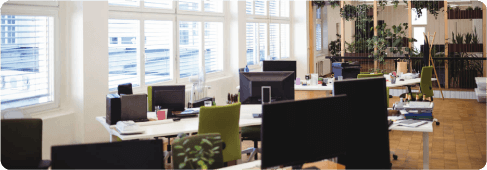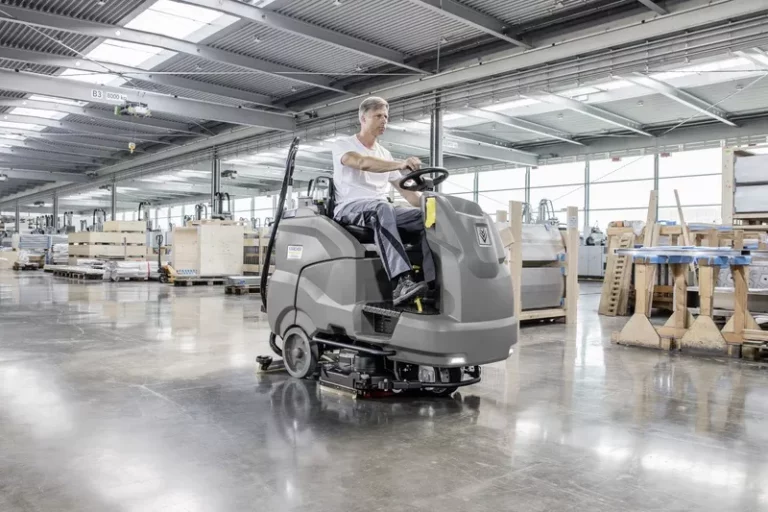Slips and falls are one of the leading causes of workplace mishaps and can come at a high price for the liable business, NHS and the injured individual. While many view them as inevitable, James White explains that in most cases they are completely avoidable. And it all starts with proper floorcare provisions.
Poorly maintained floors are one of the main sources of accidents, both in the workplace and in public settings. From adverse weather conditions causing slippery entrances, to supermarket spillages and greasy factory floors, contaminated floors are the cause of thousands of injuries every year.
In fact, according to the Health & Safety Executive (HSE), UK workers suffer around 11,000 major injuries caused by slips every year, with almost 90% involving broken bones. These mishaps come at a high cost for numerous parties.
The liable business is often hit the hardest financially, shelling out over £500 million per year in fines, healthcare, damage and production delay due to staff absence.
According to the HSE, it is also estimated that slip and fall injuries cost the NHS around £115million every single year. And then of course there is the injured individual, to which the cost is incalculable. Aside from the obvious loss of income, there is the pain, worry and stress, which can significantly reduce their quality of life.
However, despite these accidents having a significant impact on so many parties, most businesses view workplace mishaps as inevitable. They often put them down to the injured individual’s human error or claim they are unavoidable.
In reality, most accidents of this nature are completely avoidable if proper floorcare is practiced, both as part of a regular cleaning regime, and in response to spillages and so on.
A legal duty
According to UK health and safety laws, health and safety responsibilities lie with the employer.
The Health and Safety at Work Act 1974 states that employers are responsible for protecting the safety of their employees, including employed and self-employed contractors, at work. This includes making sure that workers are protected from risks that may cause harm or injury in the workplace.
This legislation also states that an employer must do everything reasonably practicable to provide a safe and healthy workplace. Put simply, business owners have a legal and moral responsibility to create an environment and culture where slips and falls are preventable.
Preparation is key
Having excellent cleanliness standards should be a given in all establishments, and when it comes to floorcare, it is more crucial than ever. After all, an unclean, contaminated floor is far more likely to cause an accident.
Ensuring that floors are free of dirt and contaminants can go a long way towards maintaining safety standards and preventing accidents from occurring with staff and visitors. This is why a regular floorcare programme is vital.
A robust daily floorcare schedule can make sure that every day is started in the right way – with clean and risk-free floors. However, a sweep and a mop will not suffice.
How many times have you seen the cleaner wheel out the old mop and bucket when a spillage occurs? From a broken bottle on a supermarket shop floor, to a rain-flooded entrance way, the same tired and ineffective methods are adopted in an attempt to clean up. But all a string mop is good for is spreading the dirt around. It doesn’t actually remove the soil and leaves another, usually larger wet surface in its wake. It is a short-sighted response to a serious hazard.
It is also pretty unhygienic. After all, the water in the bucket that is used to clean the mop after use, is the very same water that is returned to the floor to clean with. So, the problem is very much still there.
In fact, scientific research has shown that mopped areas are instantly re-infected as the mop-head picks up soils in the bucket’s contaminated water and circulates them across the floor. Even microfibre mopping only cut bacteria levels by 51% at best, before dragging bacteria back into clean areas, resulting in an overall effectiveness of 24%.
Daily soils need to be lifted away from the surface to enable a thorough clean. Using a method like high-flow fluid extraction, which I cover in the section below, eliminates the opportunity for soils and bacteria to build up on a surface. If this standard of clean is carried out every day, there is little need for more comprehensive methods, like scrubbing and deep cleans, which are labour-intensive and costly.
Rapid response to hazards
There are many day-to-day activities that can cause unexpected floorcare hazards. A bottle dropped in a supermarket aisle. A fluid leak on a factory floor. And of course, there are also occasions when factors outside of our control create hazards, like adverse weather conditions.
Whatever the source of the floorcare risk, the response should be quick and effective, to keep safety a priority, and disruption to a minimum. This means having a system in place that can quickly remove the spillage, and clean and dry the area.
The best way to treat a spillage is through high-flow fluid extraction. This process uses fresh water and cleaning chemicals, uncontaminated by previous use, dispensed on the surface. It is then agitated if necessary to loosen soils, and suctioned away to leave a clean, dry floor in a matter of seconds.
Crucially, this process ensures that the soils, and any liquids, are removed from the surface, rather than spread around the floor. This method can be used in a range of settings, from shopping centres and stations to stadiums and factories. In fact, it’s highly effective on almost all hard surfaces.
Machines like the Kaivac Stretch SUV are ideal for rapid response cleaning. Combining high speed push-behind cleaning for large areas, with a precision vacuum wand for smaller or grouted areas, this model can tackle any hard flooring challenge, as well as daily cleaning.
Thanks to its cordless battery capability, the Stretch SUV can address unexpected challenges, such as weather-related issues or spillages, quickly and safely, leaving a dry floor that is ready for immediate use.
The Kaivac Stretch SUV also offers far superior results than mopping, delivering a scrubber-drier performance, without the hassle. This machine is chosen time and time again to address rapid spill response due to its extreme soil removal technology.
Improving cleanliness levels
The effectiveness of your floorcare process can be tested through adenosine triphosphate (ATP) measurements, taken before and after cleaning. This will highlight any problem areas that need extra attention. Cleaning plans can then be updated, and hygiene levels will continue to improve each time the method is employed.
We recently tested out the ‘remove’ process at a chain of fast-food restaurants and the results were undeniable. We took ATP measurements before and after the restaurant’s regular cleaning process, and again after our own cleaning method. After our cleaning process, the readings where classed as clinically clean, even the floors. What’s more, the problem of grease on the floors had been completely eliminated.
Slip-tests, both before and after cleaning, at least once a year, will also show how effective your floorcare regime is. Not only could this help keep your floors slip free, it could also help with insurance costs and contribute towards your legal duty to ensure a safe environment.
By testing your cleanliness levels, and making improvements to your processes based on this information, you can be certain that your cleaning efforts are effective, reducing the health and safety risk for all.
Taking floorcare seriously
Floorcare is about much more than the mop and bucket. We now have automation and innovation on our side, and should embrace these new technologies to make our cleaning processes more effective.
We need to move away from traditional, ineffective practices, and commit to a robust strategy that not only removes the immediate risks of spillage, but also does a far better job of daily cleaning.
If businesses paid as much attention to floorcare as they do other health and safety risks, there would be far fewer workplace mishaps taking place. It is time for them to take floorcare seriously and invest in the right equipment and processes, to protect their staff, customers and visitors.
James White is managing director at Denis Rawlins
For more information visit www.rawlins.co.uk
Source: Cleaning Matters
















